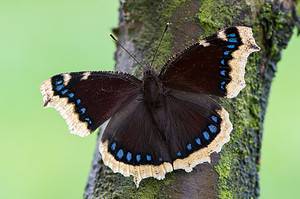Butterflies are generally considered to be beautiful insects. There are so many different shapes, colors, and sizes of butterflies (about 17,500 species), and each of them has its lifestyle and unique characteristics. Here are some fascinating things about butterflies that have been discovered over the years.

1. A butterfly can see colors that the human eye cannot see

While butterflies can spot colors that the human eyes cannot even see at all, they are not so good at spotting patterns from far away.
©KRIACHKO OLEKSII/Shutterstock.com
Butterflies have very different eyesight from human beings. Their eyesight allows them to be able to distinguish between ultraviolet light and polarised light, something that the human eye cannot do. Interestingly, just because they can see light and colors that the human eye cannot pick up doesn’t mean that they have better eyesight than human beings. It only means their eyes function differently. For instance, while they can spot colors that the human eyes cannot even see at all, they are not so good at spotting patterns from far away – they are short-sighted.
However, one of the advantages of butterflies’ ability to see ultraviolet colors is that they are able to find each other for mating since many of them have ultraviolet-colored wings.
2. A butterfly has four wings, not two wings
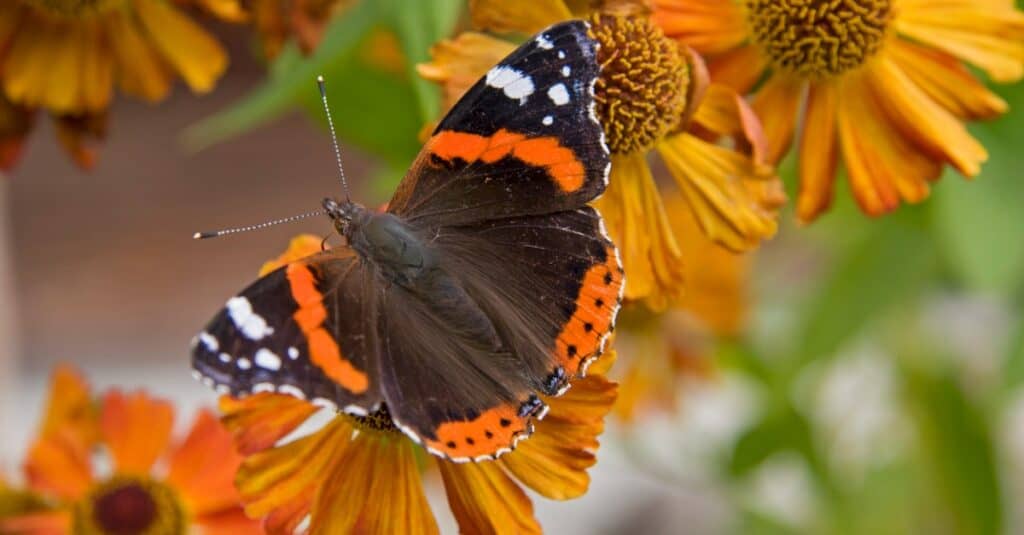
The red admiral is a type of butterfly that has a fairly large wingspan of nearly three inches.
©iStock.com/Tinieder
Contrary to what you may have seen in drawings, paintings, and even from the flight of a butterfly, they do not possess two wings but four. They have a pair of fore wings in the front and two hind wings in the back. While they are in flight, all four wings move up and down in a figure 8 pattern.
3. A butterfly cannot fly when it is cold

Butterflies’ bodies are particular about temperature and being able to fly.
©Tomas Ragina/Shutterstock.com
Butterflies are cold-blooded meaning that they don’t have internal heat regulation and get their heat from external sources like the sun. To be able to fly, butterflies need their body temperature to be at 85 degrees Faraheint (29.4 degrees Celcius). This means that when the weather becomes too cold (falls below 55 degrees Faraheint), they are unable to fly and are forced to be inactive.
4. Butterflies’ wings are transparent

Butterflies’ wings have scales that reflect light.
©iStock.com/fz750
This may seem impossible because we seem to see the often very colorful wings of butterflies every time they fly past or land near us. However, in truth, the wings of butterflies are made up of layers of a polysaccharide called chitin. These layers are so thin that you can see right through them. However, a butterfly’s wings are covered with thousands of scales reflecting light in different colors. This explains the colors that we see whenever we see a butterfly.
5. The largest butterfly in the world is an endangered species
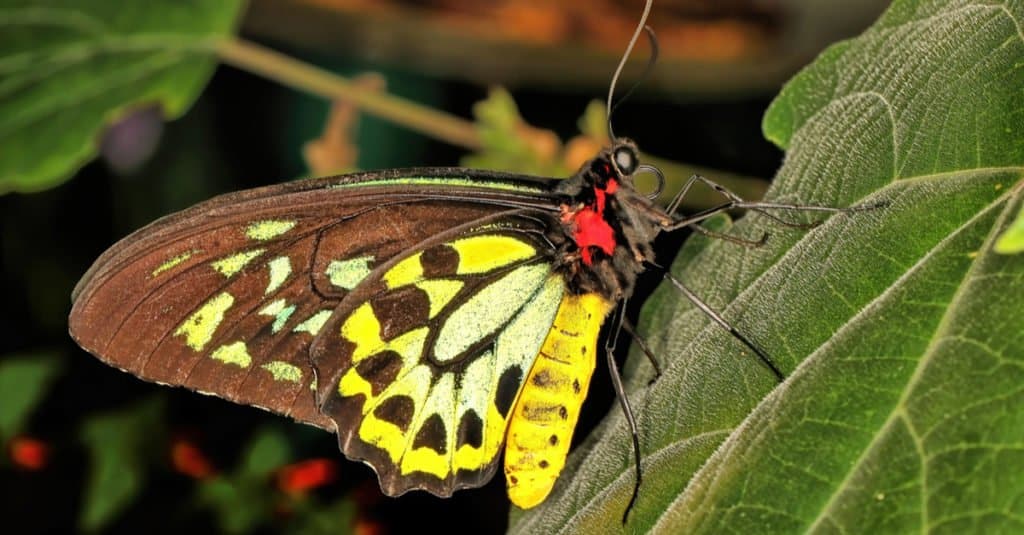
Queen Alexandra is the largest butterfly with a wingspan of 11 inches.
©Russell Marshall/Shutterstock.com
The largest butterfly in the world is Queen Alexandra’s birdwing. The largest of this species are the females, and they can have a wingspan of about 11 inches which makes them about 10 times bigger than the average butterfly. The males are a little smaller at 6.7 to 7.4 inches (17 to 19 cm). As with many butterfly species, this species is very graceful, no wonder it is named after royalty in Queen Alexandra, the Danish wife of King Edward VII of England.
However, as a result of a volcanic eruption in the 1950s and continual deforestation of this butterfly’s habitat, it has been classified as an endangered species by the International Union for Conservation of Nature.
6. Butterflies don’t live very long

Butterflies’ only live for a short amount of time.
©iStock.com/Aliaksandr Bukatsich
The average life span of an adult butterfly is two weeks. During that short period, butterflies focus on two activities, namely eating and mating. However, as with almost anything, there are exceptions to the case. Some butterflies only live for a few days. Examples include Coppers and Small Blues. Likewise, some butterflies live for as long as 8 months. These butterflies are usually migratory ones and they migrate to more tropical areas. An example is the Northern American Monarch.
7. Butterflies taste with their feet
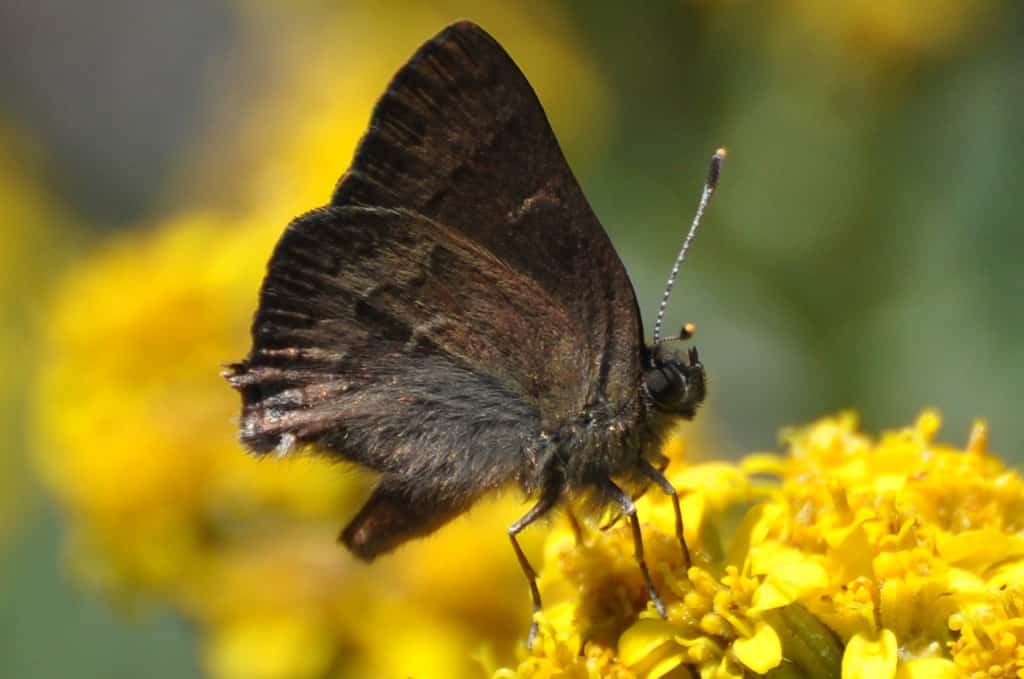
These insects are able to use their feet to taste!
©regexman / CC BY 2.0 – License
This may be the most unusual fact about butterflies for you to understand. However, from the perspective of the butterfly, it is not so far-fetched. Butterflies have taste receptors on their feet so when they land on a surface, they are able to tell whether it is food. To provide food for their caterpillars, this attribute is especially useful since it allows them to recognize whether a plant is suitable for feeding. So, the next time a butterfly lands on you, it most probably just wants to find out if you are food.
8. Butterflies live strictly on a liquid diet
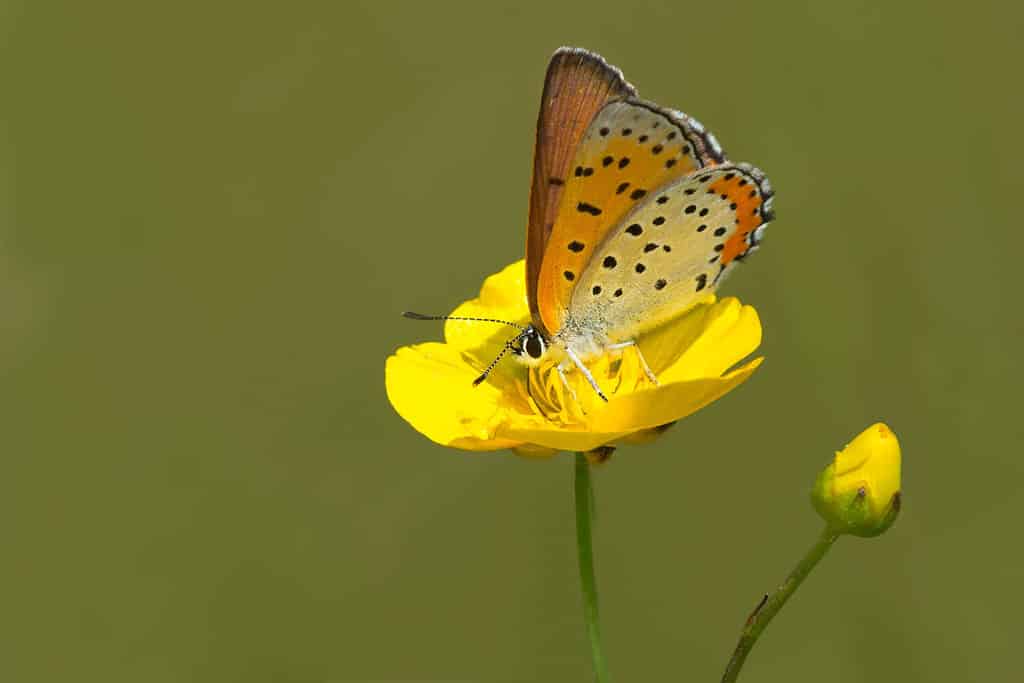
Butterflies’ proboscises act like straws.
©Paul Reeves Photography/Shutterstock.com
Butterflies do not have mouth organs that allow them to chew or bite. Instead, they have a proboscis which functions as a straw. Therefore, they have to sip or suck all their food which is mostly nectar from flowers. Some butterflies feed on sap and others sip from carrion, but no matter the source of the meal, butterflies must take it in liquid form.
9. To avoid predators, butterflies perform several tricks with their wings

Butterflies’ bright wings can help deter threats by suggesting that they may be poisonous.
©David Havel/Shutterstock.com
Butterflies are at the lower end of the spectrum with many predators willing and able to eat them on a whim. So, butterflies use their wings in multiple ways to deter and avoid predators. A prominent way is to fold their wings and blend into the environment so that they are not seen. Another trick, which is quite the opposite of the other, is to put their full color on display to deter predators. Brightly colored insects are usually poisonous, therefore a predator will be skeptical about eating them when they appear in full color.
10. Butterflies include mud puddles in their diet plan
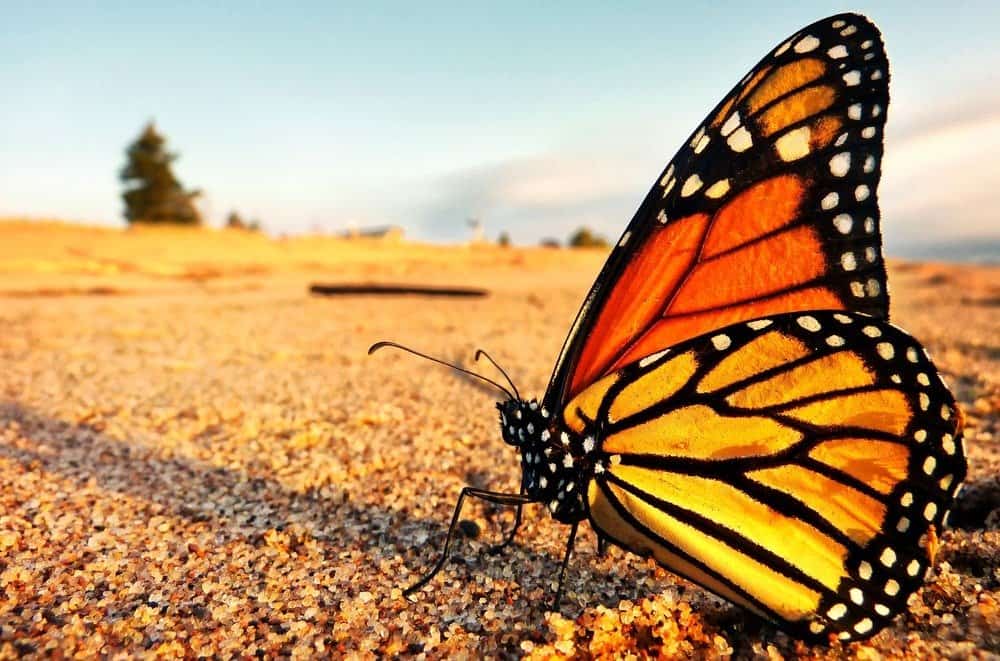
Butterflies can obtain needed minerals by drinking from mud puddles.
©Chris Frost/Shutterstock.com
It is not uncommon to see butterflies taking a drink from mud puddles which are crucial for them to get minerals. Nectar is great, but some of the minerals that butterflies need can’t be gotten from nectar. Therefore, butterflies, especially males, take sips from mud puddles to get these minerals. The practice of taking sips from mud puddles is known as puddling.
Male butterflies are particular about puddling because the minerals gotten are incorporated into their sperm and transferred to the females through mating. The minerals in turn make the eggs more viable.
The photo featured at the top of this post is © iStock.com/Elenathewise
Thank you for reading! Have some feedback for us? Contact the AZ Animals editorial team.




